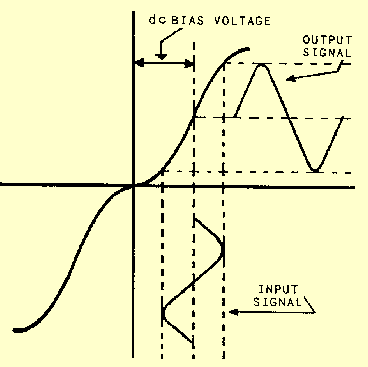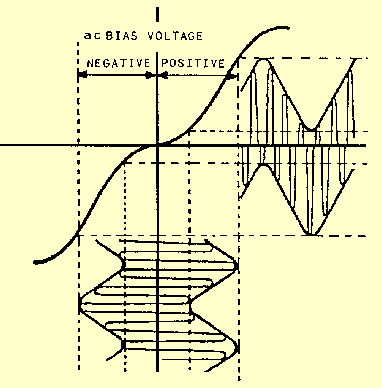Data Storage
As technology advances, better methods of data storage have come about. From 700mb disks to 4Gb and up flash-drives. But, to understand these advances you should learn about their basic origins.
We will introduce you to early methods of recording information. Starting with the earliest methods of data storage to today's modern methods.
So, follow along as we present you with an introduction to magnetic recording and other known older methods of storage.
Magnetic Recording
Magnetic recording devices seldom get much attention until they fail to work. But without magnetic recording, recording your favorite television show on a video cassette recorder would have been impossible, portable tape players would not have existed, and you would not have been able to get money from an automated bank teller machine at two o'clock in the morning.
Computer programs and data storage would have to be on either paper cards or on rolls of paper tape. Both of these methods needed a lot of data storage space, and they took much longer to load into and out of the computer. There would not have been any movies to show or music to play on the television and radio.
Magnetic recording played a very important part in our everyday lives.
HISTORY OF MAGNETIC RECORDERS
In 1888, Oberlin Smith originated the idea of using permanent magnetic impressions to record sounds. Then in 1900, Vladeniar Poulsen brought Mr. Smith's dream to reality. At the Paris Exposition, he demonstrated a Telegraphone. It was a device that recorded sounds onto a steel wire. Although everyone thought it was a great idea for data storage, they didn't think it would succeed since you had to use an earphone to hear what was recorded. It wasn't until 1925, when electronic amplifiers were developed, that data storage using magnetic recording started to receive the attention it deserved.
The best magnetic recording is the one that produces an output signal identical to the input signal. It didn't take long to realize that the magnetism generated during the recording process didn't vary directly to the current which caused it. This is because there's a step in the magnetism curve where it crosses the zero point and changes polarity. This step causes the output signal to be distorted when compared with the input signal. The picture below shows this step.

Magnetic recording without bias voltage.
In 1907, Mr. Poulsen discovered a solution to this problem. He discovered dc bias. He found that if a fixed dc voltage were added to the input signal, it moved the input signal away from the step in the magnetism curve. This prevented the input signal from crossing the zero-point of the magnetism curve. The result is an output signal exactly like the input signal. The next picture below shows this process.

Magnetic recording with dc bias voltage.
Unfortunately, dc bias had its problems. Since only a small portion of the magnetism curve was straight enough to use, the output signal was weak compared with the natural hiss of the unmagnetized tape passing the playback head. This is commonly called poor signal-to-noise ratio (SNR). We'll explain SNR in more detail later.
From the beginning, the U.S. Naval Research Laboratories (NRL) saw great potential in magnetic recording for data storage. They were especially interested in using it to transmit telegraph signals at high speed. After electronic amplifiers were invented around 1925, W.L. Carlson and G.W. Carpenter at the NRL made the next important magnetic recording discovery. They found that adding an ac bias voltage to the input signal instead of a fixed dc bias voltage would
1. reproduce a stronger output signal
2. greatly improve the signal-to-noise ratio
3. greatly reduce the natural tape hiss that was so common with dc bias
To make ac bias work, they used an ac frequency for the bias
voltage that was well above what could be heard, and a level that placed
the original input signal away from both steps in the magnetism curve.
This resulted in two undistorted output signals that could be combined
into one strong output. See the next picture below.

Magnetic recording with ac bias voltage.
Until 1935, all data storage utilizing magnetic recording was on steel wire. Then, at the 1935 German Annual Radio Exposition in Berlin, Fritz Pfleumer demonstrated his Magnetophone. It used a cellulose acetate tape coated with soft iron powder. The Magnetophone and its "paper" tapes were used until 1947 when the 3M Company introduced the first plastic-based magnetic tape.
In 1956, IBM introduced the next major contribution to magnetic recording - the hard disk drive. The disk was a 24-inch solid metal platter and stored 4.4 megabytes of information. Later, in 1963, IBM reduced the platter size and introduced a 14-inch hard disk drive.
Until 1966, all hard disk drives were "fixed" drives. Their platters couldn't be removed. Then in 1966, IBM introduced the first removable-pack hard disk drive. It also used a 14-inch solid metal platter.
In 1971, magnetic tape became popular again when the 3M Company introduced the first 1/4-inch magnetic tape cartridge and tape drive. In that same year, IBM invented the 8-inch floppy disk and disk drive. It used a flexible 8-inch platter of the same material as magnetic tape. Its main goal was to replace punched cards as a program-loading device.
The next contribution to magnetic recording literally started the personal computer (PC) revolution. In 1980, a little-known company named Seagate Technology invented the 5-1/4-inch floppy disk drive. Without it, PCs as we know them today would not exist.
From then on, it was all downhill. Magnetic tape became more
sophisticated. Floppy disks and disk drives became smaller, while their
capacities grew bigger. And hard disk capacities just went through the
roof. All of the major hurdles affecting magnetic recording had been
successfully cleared, and it was just a matter of refining both its
methods and materials.
Magnetic Recording Prerequisites
Magnetic Tape
Magnetic Tape Errors
Magnetic Tape Failure
Tape Reels and Tape Cartridges
Magnetic Tape Handling, Packaging, and Storage
Tape Recorder Electronics
Tape Recorder Specifications
Harmonic Distortion
Flutter















